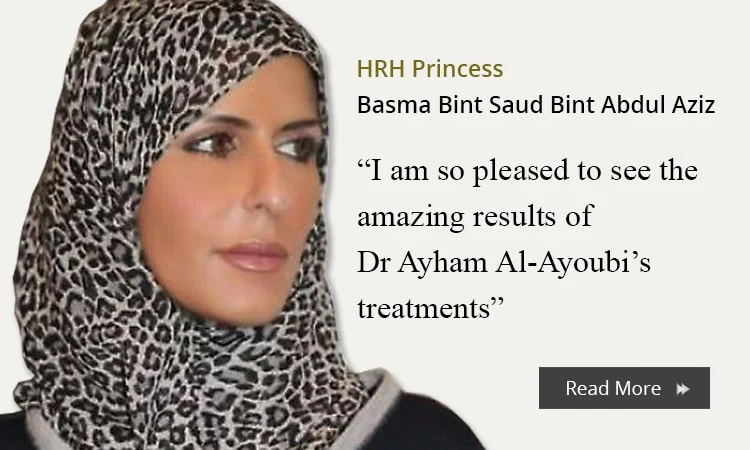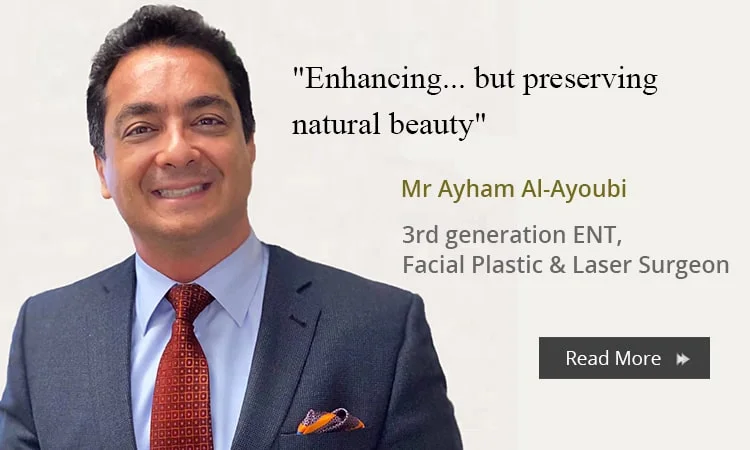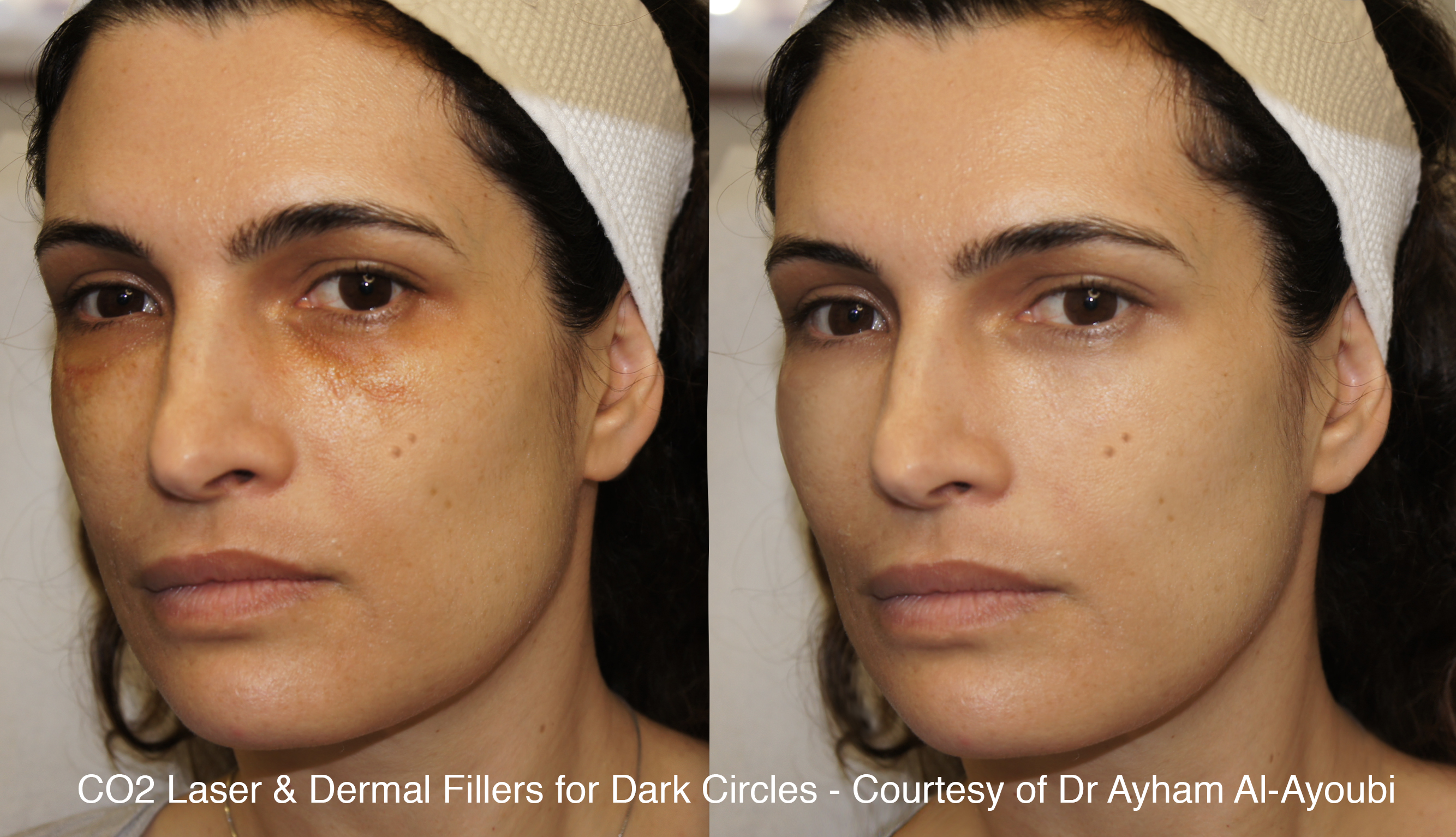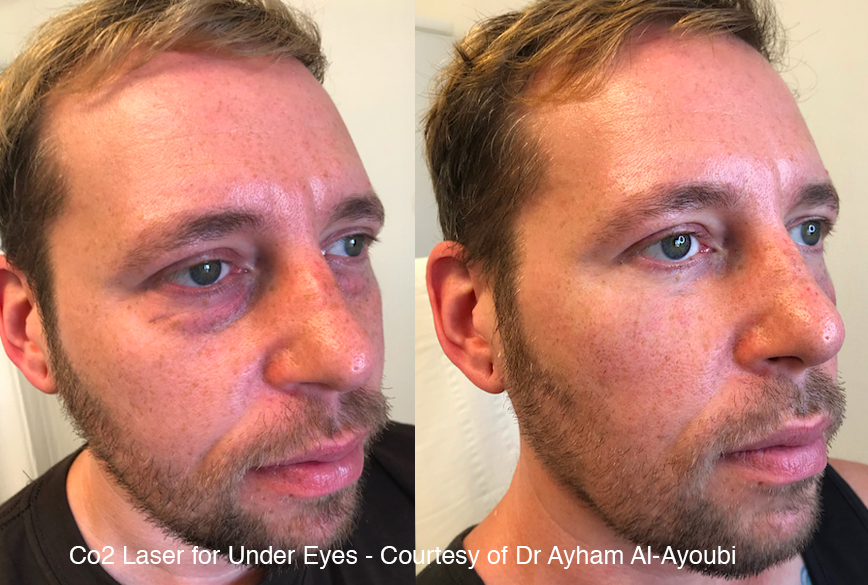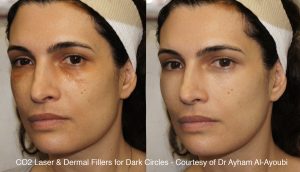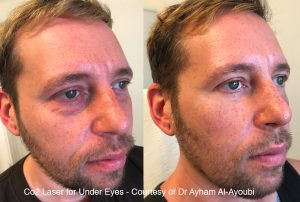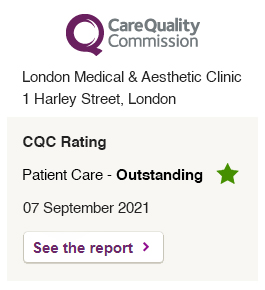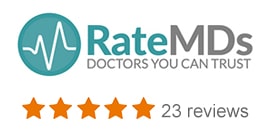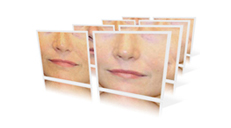At London Medical and Aesthetic Clinic, we provide one of the most effective treatments available for acne scarring: fractional CO2 laser resurfacing. We use the advanced SmartSkin Performa CO2 laser, a system first introduced to the UK and Europe by Dr Ayham Al-Ayoubi, which allows our clinic to remain at the forefront of laser technology and acne scar correction.
Fractional CO2 resurfacing is widely regarded as the gold standard for improving moderate to severe acne scars because it treats both the surface and the deeper layers of the skin. The laser breaks down dense scar tissue while stimulating the production of fresh, healthy collagen, helping to lift indentations and refine uneven texture. Patients achieve smoother skin, softer scars, improved tone and a clearer overall complexion, all with significantly less downtime than traditional fully ablative CO2 treatments.
Why Choose CO2 Laser for Acne Scars?
Acne scars can be stubborn, uneven and emotionally distressing. Topical creams, peels and microneedling often provide only partial improvement. Fractional CO2 laser resurfacing takes a far more powerful approach, reaching deeper levels of the skin where acne scars form.
The SmartSkin Performa CO2 laser creates precise microscopic treatment zones — known as micro-ablative columns — that remove damaged scar tissue while leaving surrounding healthy skin intact. This fractional pattern promotes rapid healing and encourages intensive collagen remodelling, which is essential for smoothing indentations and restoring a more even skin surface.
For patients looking for significant improvement with long-lasting results, CO2 laser resurfacing is one of the most advanced and transformative treatments available.
What Types of Acne Scars Can CO2 Laser Treat?
CO2 laser resurfacing can improve nearly all types of atrophic acne scars, including:
- Ice pick scars – narrow, deep indentations
- Boxcar scars – wider depressions with sharp edges
- Rolling scars – shallow, sloping undulations
- Mixed scar patterns – a combination of different scar types
- Textural roughness – uneven or pitted texture left from previous breakouts
- Post-inflammatory pigmentation – dark marks lingering after acne
By reaching the deeper dermis and triggering new collagen formation, fractional CO2 laser helps lift, smooth and refine scarred skin in a way light resurfacing treatments cannot.
Before and After photo gallery
Evolution of CO2 Laser Technology for Acne Scarring
CO2 laser resurfacing has progressed enormously since its introduction in the 1990s. Early continuous-wave CO2 lasers delivered powerful results but offered limited control, longer recovery times and a higher chance of unwanted side effects. These early systems paved the way for more refined pulsed and scanned CO2 lasers, which allowed greater precision and better outcomes with reduced risk.
As laser science advanced, Er:YAG technology and later fractional resurfacing techniques were developed. Fractional lasers represented a major breakthrough: instead of treating the entire surface at once, they created microscopic zones of controlled injury, allowing the surrounding healthy skin to accelerate healing. This produced meaningful improvement in acne scarring with significantly less downtime than traditional full-field CO2 resurfacing.
Non-ablative fractional lasers later emerged, offering even lower downtime, though typically requiring multiple sessions to achieve comparable results. For many years, patients had to choose between more downtime with fewer sessions, or less downtime with more treatments.
Modern technology has changed that. The SmartSkin Performa CO2 system used at London Medical and Aesthetic Clinic represents the latest generation of fractional ablative laser science. It allows the doctor to finely adjust depth, density and energy in a way earlier systems could not, delivering powerful collagen stimulation and precise removal of scar tissue while still maintaining a manageable recovery period. For acne scars, this combination of control, depth and fractional delivery makes it one of the most effective options available today.
How the SmartSkin Performa CO2 Laser Works
London Medical and Aesthetic Clinic was the first in the UK and Europe to introduce the SmartSkin CO2 system, a highly sophisticated fractional laser platform trusted worldwide for acne scar improvement. Its precision scanning technology allows the doctor to deliver energy in ultra-fine patterns, known as Dot Resurfacing.
The treatment works through two mechanisms:
1. Ablation of Scar Tissue
The laser removes micro-columns of damaged skin, smoothing irregularities and breaking down fibrotic scar tissue.
2. Deep Collagen Stimulation
Controlled heat is delivered into the dermis, activating fibroblasts and encouraging new collagen and elastin to form. Over time, this helps fill indentations and smooth contour irregularities.
Because surrounding skin remains intact, healing is faster than with traditional fully ablative CO2 lasers — while still offering dramatic improvement.
Benefits of CO2 Laser for Acne Scars
- Significant improvement in moderate to severe acne scars
- Smoother, more refined skin texture
- Reduction in pore size, roughness and uneven tone
- Long-lasting collagen remodelling for continued improvement
- Treats both surface irregularities and deep scar tissue
- Customisable intensity based on scar severity and skin type
- Faster healing than traditional CO2 resurfacing
- Suitable for face, temples, forehead, jawline, chin and other affected areas
CO2 Laser Treatment for Acne Scars
CO2 laser treatment for acne scarring is performed at London Medical and Aesthetic Clinic by Dr Ayham Al-Ayoubi, one of the most experienced laser specialists in the field of scar correction. Each session is carefully tailored to the type and depth of scarring, ensuring the correct balance of precision, safety and intensity. Treatment time varies depending on the areas being targeted, but most sessions last between 20 and 45 minutes, with full-face acne-scar resurfacing typically taking around one hour.
Local anaesthetic is applied before treatment to keep the procedure comfortable. Patients may feel warmth or a light stinging sensation during the laser pulses, but this is usually manageable. Protective eye shields are worn throughout the session. Because acne scarring can vary significantly in depth and density, some scars are treated individually while others receive a broader fractional resurfacing approach to smooth larger areas of uneven texture.
Most patients require a course of treatments to achieve the best outcome. Mild-to-moderate scarring may respond well to a single session, while deeper or long-standing scars often benefit from two or three treatments. These sessions are usually spaced several months apart to allow collagen to fully develop between appointments.
The SmartSkin Performa laser uses micro-ablative fractional technology, meaning the laser beam is divided into thousands of very fine micro-columns. When these micro-columns are delivered into the skin, they remove tiny areas of damaged scar tissue while leaving the surrounding tissue intact. This intact skin speeds up healing and dramatically reduces the downtime associated with traditional CO2 resurfacing, while still delivering powerful collagen stimulation and scar remodelling.
Following treatment, it is normal for the skin to feel warm and slightly swollen, particularly around delicate areas such as the eyes. Dr Ayoubi may recommend cold-air cooling during the procedure and prescribe medications such as antivirals or antibiotics as a preventative measure. Patients are advised to sleep slightly elevated for the first night to reduce swelling and to follow the clinic’s cleansing protocol using sterile water and the aftercare ointment provided.
In the first few days, the skin may appear red and feel tight, similar to a sunburn. Light peeling usually begins between days three and seven as old, damaged skin sheds and fresh new skin emerges underneath. As healing progresses, the surface becomes smoother and more even. Any residual pinkness tends to fade gradually over several weeks, although it can be easily camouflaged with mineral-based makeup once the skin has fully re-epithelialised.
Some darker pigmentation or freckles may temporarily appear more noticeable before flaking away; this is part of the normal healing process as the laser lifts superficial pigment. Very rare side effects include prolonged redness, pigmentation changes or minor scabbing, but these are uncommon when the treatment is performed correctly and supported by appropriate aftercare.
Patients must avoid sun exposure during the healing period. Daily use of a broad-spectrum SPF 30 or higher is essential once the skin has healed enough for sunscreen application. Wearing protective clothing and minimising midday sun exposure further protects the newly resurfaced skin. Keeping the skin well moisturised during recovery is important, and any active skincare products – such as retinoids or acids – should be avoided until Dr Ayoubi advises otherwise.
Because the laser stimulates new collagen growth, improvements continue to build for several months after each treatment. Acne scars gradually soften, indentations lift and the skin becomes notably smoother and more refined as collagen remodelling takes place beneath the surface.
What to Expect During Treatment
Your treatment begins with a consultation and skin assessment with Dr Ayham Al-Ayoubi. A topical anaesthetic cream is applied before the procedure to maximise comfort.
During the session, the SmartSkin CO2 laser is passed over the scarred areas using a fine fractional scanning pattern. Patients typically feel warmth or a light prickling sensation, but the treatment is well tolerated. After the procedure, the skin will appear red and warm, similar to a sunburn, which is a normal part of the healing process.
Aftercare and Recovery
Recovery time depends on the intensity of the treatment and the severity of scarring, but most patients experience:
- Redness for 2–3 days
- Mild swelling for 24–48 hours
- Light peeling as the skin regenerates
- Slight pinkness for 1–3 weeks
Dr Ayoubi prescribes antiviral and antibiotic medication as a standard precaution and provides detailed aftercare instructions, including how to cleanse the skin with a water and vinegar solution to support healing. Sunscreen is essential until the skin fully recovers.
When Will I See Results?
Most patients notice the first improvements once the initial healing has settled and the redness begins to fade, usually within the first one to two weeks. During this early phase, the skin often looks fresher and feels smoother as the surface layer renews itself.
Over the next several weeks—typically between weeks two and six—the skin continues to improve as early collagen activity begins. Scars may start to soften, and texture gradually becomes more even as the deeper layers of the skin respond to the treatment.
The most significant results develop between six and twelve weeks. This is when collagen remodelling is at its peak, helping to lift indentations, refine rough areas and improve overall clarity and tone. Many patients see their skin becoming progressively smoother, brighter and more balanced throughout this period.
Long-term results continue to build for three to six months after treatment. Collagen production remains active well beyond the initial healing stage, meaning that improvements in texture, firmness and scar depth can keep developing for several months. For deeper or long-standing acne scars, a series of two to three sessions spaced a few months apart may be recommended to achieve the best final outcome.
Is CO2 Laser Safe?
CO2 laser resurfacing is considered a safe and well-established treatment when carried out by an experienced doctor. The SmartSkin Performa CO2 system used at our clinic is both FDA-approved and CE-marked for skin resurfacing, meaning it has undergone strict testing for safety, quality and clinical performance. Its fractional technology allows the doctor to treat only tiny columns of skin at a time while preserving surrounding healthy tissue, which reduces downtime and lowers the risk of complications compared with older, fully ablative CO2 lasers.
As with any advanced skin procedure, some temporary effects are expected, such as redness, warmth or mild swelling during the early healing phase. These typically settle over the following days as the skin recovers. More uncommon side effects, such as infection or pigmentation changes, are possible but occur infrequently, particularly when the treatment is tailored correctly and proper aftercare instructions are followed. Under the supervision of a highly experienced practitioner, CO2 resurfacing offers a predictable safety profile and consistently strong results.
Why Choose Dr Ayham Al-Ayoubi?
Dr Ayham Al-Ayoubi introduced the SmartSkin CO2 laser system to the UK and Europe and is widely recognised as one of the most experienced specialists in laser-based acne scar correction. With decades of clinical experience and many thousands of laser procedures performed, he has developed a highly refined approach to fractional CO2 resurfacing that focuses on safety, precision and natural-looking improvement. Every treatment plan is carefully tailored to the individual, taking into account scar type, skin quality and desired outcome to ensure the most effective and predictable results.
Patients travel from across the UK and internationally for his expertise, and London Medical and Aesthetic Clinic has become a leading destination for those seeking advanced, specialist care for acne scarring.
CO2 Laser for Acne Scars – FAQs
How does CO2 laser improve acne scars?
CO2 laser resurfacing improves acne scars by creating thousands of microscopic treatment zones in the skin, which break down hardened scar tissue while stimulating fresh collagen production at deeper levels. This dual action helps lift indentations, smooth uneven texture and refine the overall appearance of scarred areas. Because the treatment targets both the surface and deeper layers of the skin, it can significantly improve rolling, boxcar and mixed scars that do not respond well to lighter treatments such as peels or microneedling.
Is CO2 laser good for all types of acne scars?
CO2 laser is especially effective for atrophic acne scars such as rolling and boxcar scars, as well as for general textural roughness and enlarged pores. It can improve the appearance of ice pick scars, but these very deep scars sometimes require a combination approach, such as TCA CROSS or subcision, which can be discussed during consultation. The fractional nature of the SmartSkin Performa CO2 laser allows for precise treatment of mixed scar patterns, making it suitable for most patients with moderate to severe scarring.
Is the treatment painful?
Most patients tolerate CO2 laser resurfacing well because a topical numbing cream is applied before the procedure to minimise discomfort. During treatment, patients may feel warmth or a light prickling sensation as the laser passes over the skin, but this is generally manageable. After the session, the skin may feel tender and warm, similar to a sunburn, which is a normal part of the healing process and gradually settles over the next few days.
What is the downtime after CO2 laser for acne scars?
Downtime varies depending on the intensity of the treatment and the severity of the scars being addressed. Most patients experience redness for several days, followed by mild peeling as new skin regenerates. The skin may appear pink for a few weeks while deeper healing continues, but patients can usually resume normal daily activities within a short period. Detailed aftercare instructions are provided to ensure optimal healing and reduce the risk of irritation or infection.
How many sessions will I need?
The number of sessions required depends on the severity and type of acne scarring. Some patients with mild to moderate scarring see significant improvement after a single session, while those with deeper or more extensive scarring may benefit from two or three treatments spaced several months apart. Because collagen continues to remodel for months after each session, results improve gradually over time, and treatments can be adjusted based on your skin’s response.
When will I see results?
Initial improvements often become visible once the skin has healed from the early recovery phase, usually within two weeks. However, the most noticeable results develop gradually over the following six to twelve weeks as new collagen forms and the skin becomes smoother and more even. This ongoing remodelling process is what makes fractional CO2 laser particularly effective for long-term improvement of acne scars.
Is CO2 laser safe for darker skin tones?
Fractional CO2 laser can be used safely on certain darker skin tones, but suitability depends on individual factors such as pigmentation history, scar depth and overall skin sensitivity. Some darker skin types may have a higher risk of post-inflammatory hyperpigmentation, so treatment energy and density are carefully customised to reduce risks. During consultation, an assessment is carried out to determine the safest and most effective approach, and alternative treatments may be recommended if CO2 resurfacing is not the ideal option.
What are the possible side effects?
Temporary side effects include redness, swelling, warmth and mild peeling, all of which are part of the normal healing process. More uncommon side effects can include prolonged pigmentation changes, infection or small areas of delayed healing, although these risks are significantly reduced when the procedure is performed by an experienced doctor and proper aftercare is followed. The SmartSkin Performa system allows precise control over energy levels, helping to minimise risk while achieving effective results.
Can CO2 laser completely remove acne scars?
While no treatment can guarantee complete removal of all acne scars, fractional CO2 laser resurfacing can dramatically improve their appearance by lifting depressions, smoothing edges and refining overall texture. Many patients see a substantial reduction in the visibility of scars, with smoother and more even skin. For the best outcome, some scars may benefit from a combination approach, such as subcision or targeted chemical reconstruction, which can be discussed during consultation.
How long do results last?
The results of CO2 laser resurfacing are long lasting because the treatment stimulates ongoing collagen remodelling within the skin. Improvements achieved can remain visible for many years, especially when combined with good skincare, sun protection and avoidance of acne flare-ups. While the natural ageing process continues, the structural improvements created by the laser provide lasting benefits for skin texture and scar appearance.
Book Your CO2 Laser Acne Scar Consultation
If acne scars are affecting your confidence, fractional CO2 laser resurfacing offers a powerful and proven way to smooth, refine and rejuvenate your skin. To discuss your concerns and explore treatment options, contact London Medical and Aesthetic Clinic to arrange a consultation.


